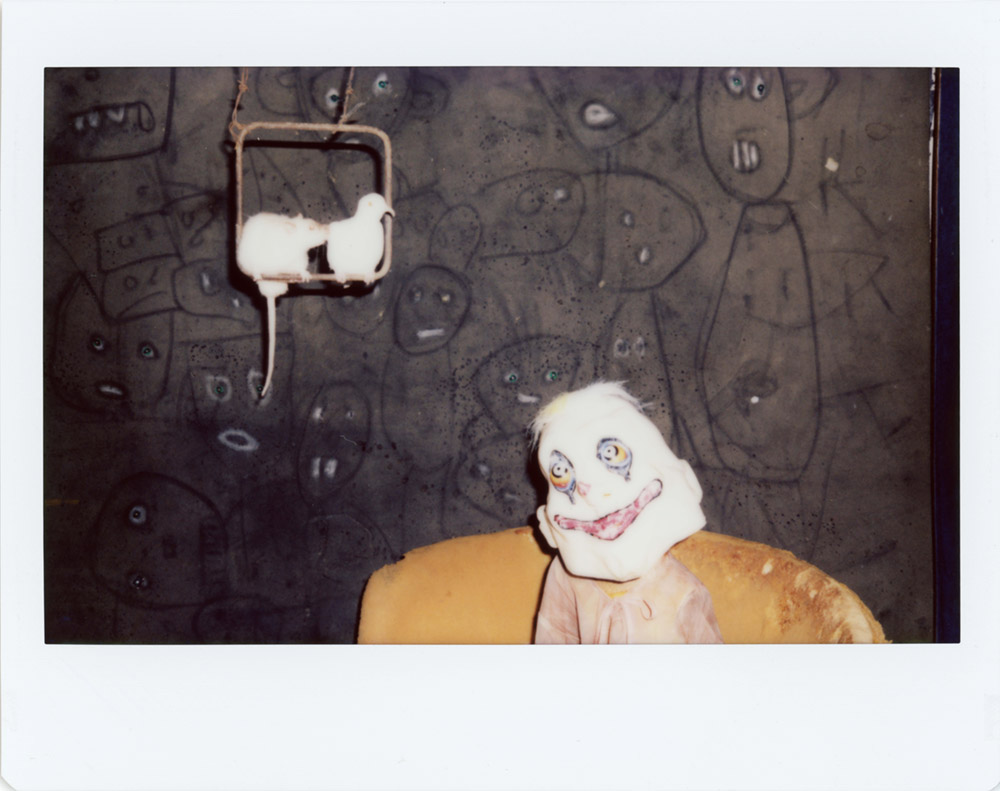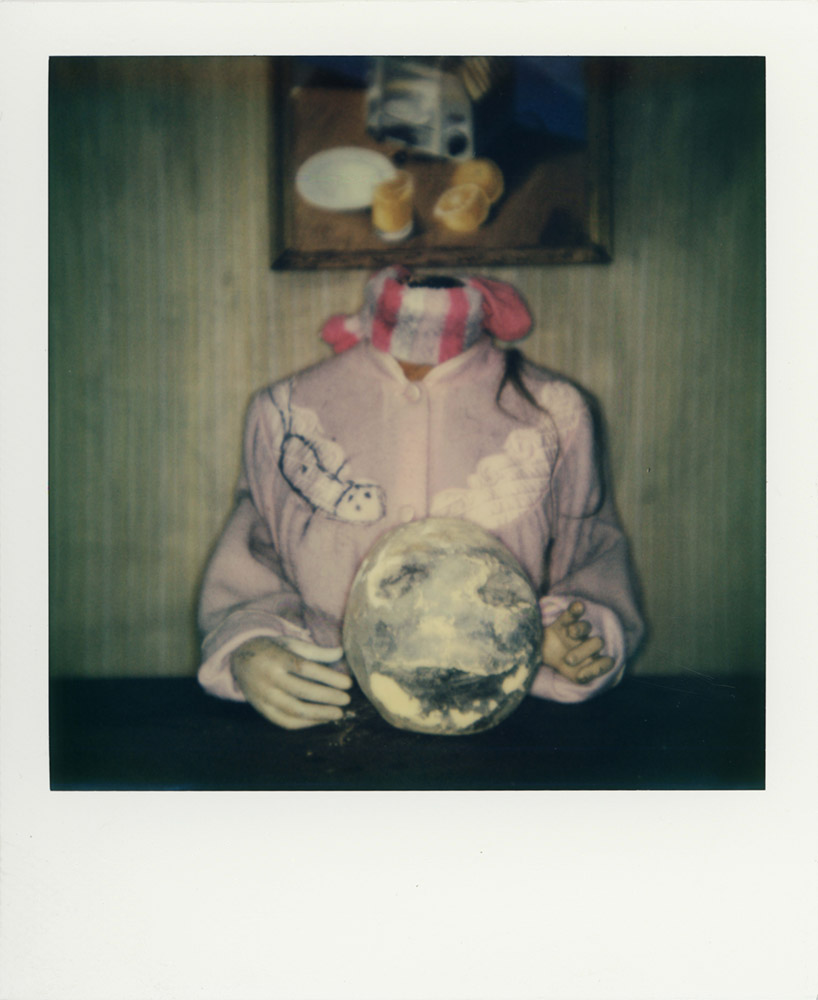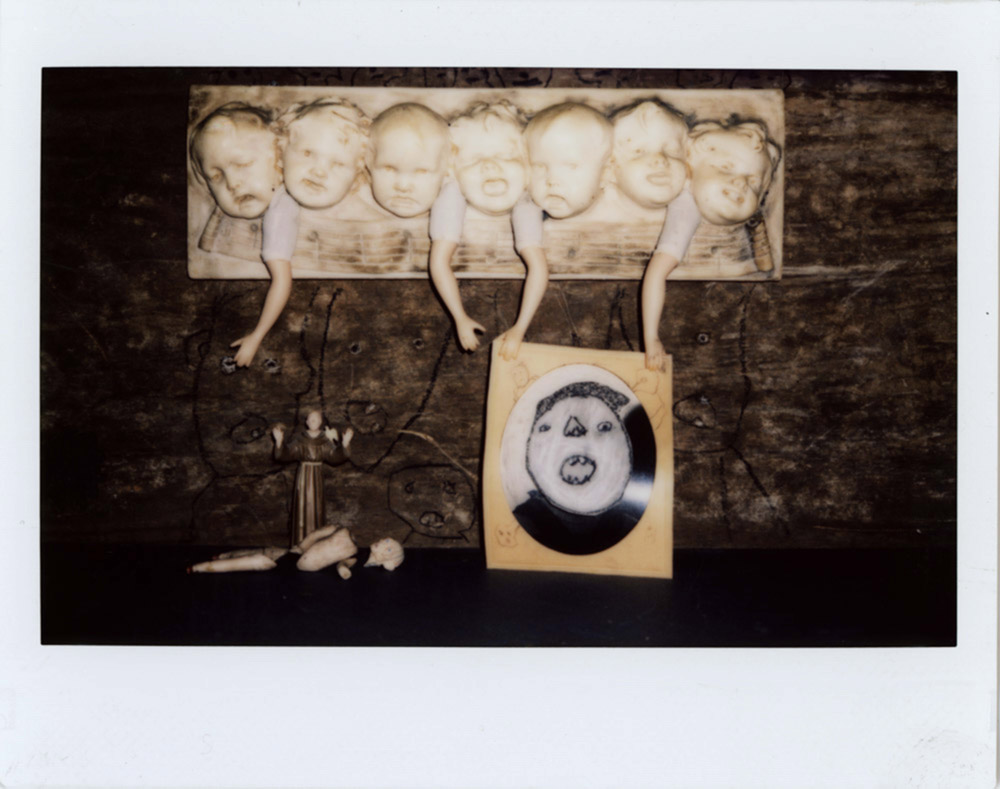This article was originally published on vice.com
Roger Ballen got famous for his eerie photos of abandoned urban sprawl and the discarded people who live there. Over 60 years spent constantly shooting pictures between schooling and working in geology, he’s carved out an unmistakable chunk of visual territory. Even as his aesthetic melded with grungy zef pop stars Die Antwoord in the early 2010’s (if you’ve seen their video for “I Fink You Freeky” then you’ve seen his work), he’s continued to sharpen a difficult-to-define style he calls “Ballenesque.”
The latest mutation of his unsettling, psychological art is a series of 150 Polaroids at the Unseen Photo Fair in Amsterdam, debuting Friday in Reflex Gallery ’s booth there. They’re a sharp turn from the rest of his award-winning, museum-approved, large-format, black-and-white ouvre. They’re tiny, they’re spontaneous, and most notably, they’re the first color photos of his career.
The first Polaroids Ballen has taken since the 70s are different from his recent work, but at the same time, they’re a stark contrast to legendary Polaroids of that era by icons like Andy Warhol and Keith Haring. The Pops used them to intimately capture the faces and bodies of their friends, but Ballen has spent the last couple of decades phasing humans out of his pictures entirely. He mostly turns his lens on meticulous arrangements of decay, paintings, and vermin. Even if a human body is present, the face will be covered by a mask or false head. Over decades in Johannesburg, where all his photos are shot, he’s scouted warehouses, storage facilities, and people’s homes to find the perfect spots for realizing his nightmarish visions.
Ballen tells us his dark, moody photos don’t “have a message or project an emotional state,” but they feel like a direct line into his subconscious. “All my pictures have something deeply psychological to them, but I try not to start with a word and define it visually,” he says over the phone. “The pictures should have a complex psychological and visual meaning, but it shouldn’t be too explainable. If a picture can be easily explained in words, then it’s probably a bad picture.”
That complexity is usually the result of careful on-set planning, but he says the instant shots he’s been producing with Fujifilm’s Instax series and the now-defunct Impossible Project’s instant-film camera are different. “They’re more spontaneous,” he says. “They’re less meditative. More snapshot-y. It’s not layer by layer. It almost feels like taking pictures with a phone. It’s easy, but you can’t predict how it’s gonna turn out.”
Case in point: the below photo of a rooster mask on a mannequin sitting in front of a rooster painting while a rat looks on. It was one of Ballen’s first Polaroids, and was years in the making. A friend gave him the mask, but he had no idea what to do with it until he discovered the painting while on a trip to Cape Town. He brought them both to one of his unique locales and arranged them like so. The image wasn’t perfect until an assistant placed the rat inside the tangled web of wire. Yet since it’s a Polaroid, Ballen only so much control in the moment of capturing the photo. Despite the planning, the image feels he captured an extremely unlikely coincidence.
Ballen has obsessively incorporated instant film into his work over the last 18 months. “The concept I’ve been exploring through my work, if I have one, is the concept of what is real and what isn’t real,” he says. “This borderline between reality and fantasy, subconscious and conscious, concrete and illusion pervades these Polaroids.”
Ballen’s Polaroid photos will be on display in Reflex Gallery’s booth at the Unseen Photo Fair in Amsterdam through September 23. Check out a selection of exclusive images from the show below.






Comments are closed.